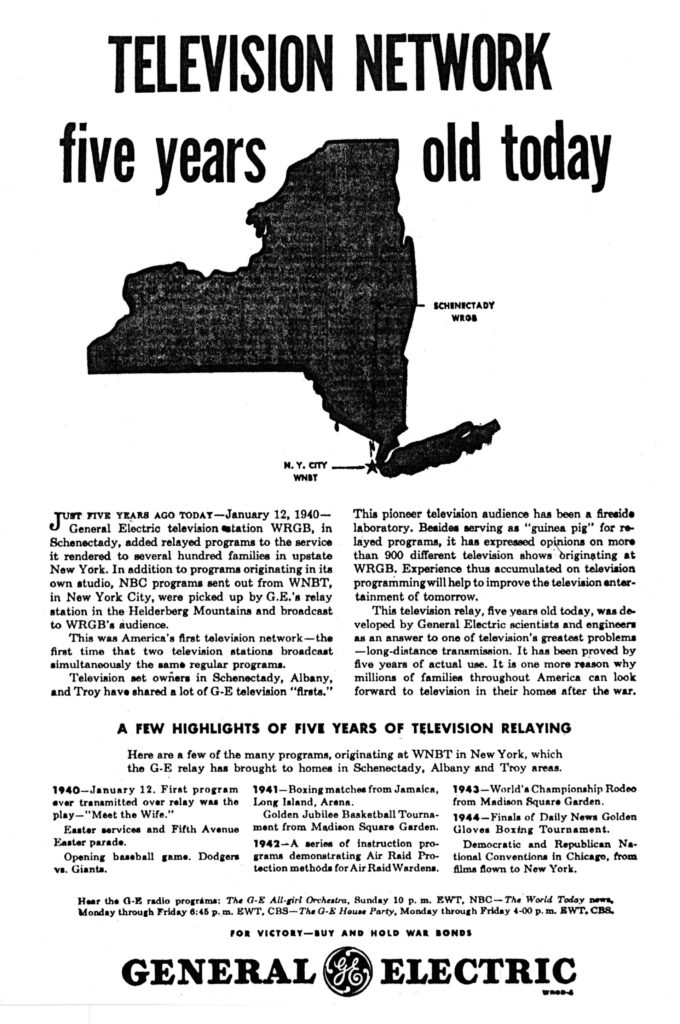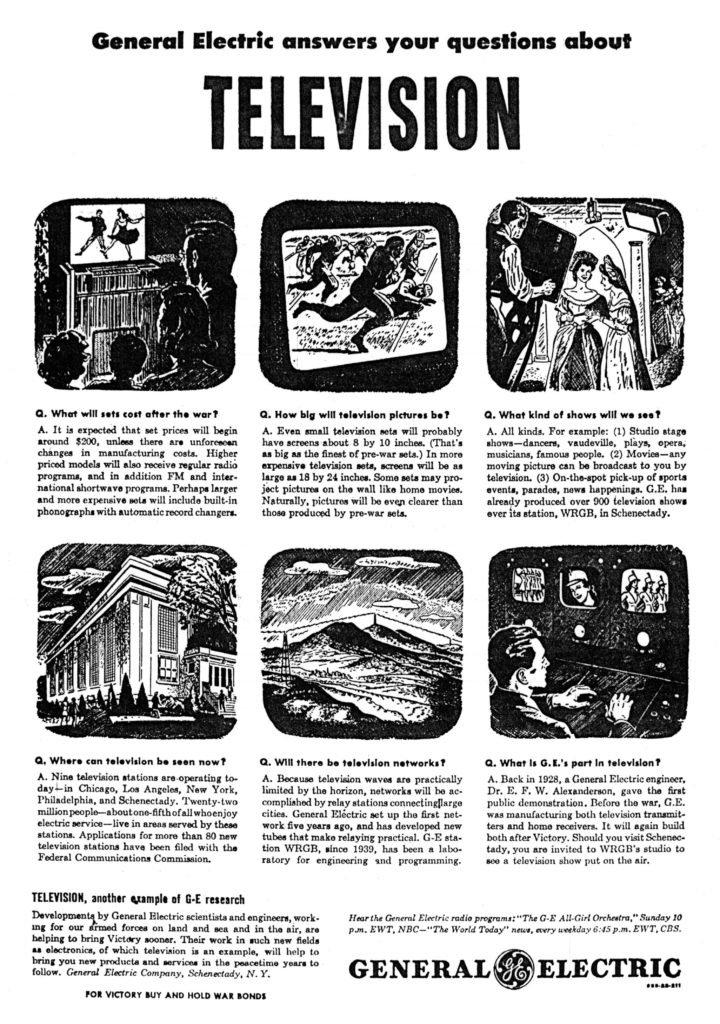A sign of the times; a herald of the times, in the Times:
An advertisement by General Electric from early 1945, promoting GE’s television network, through station WRGB in Schenectady, New York. Relying far more on explanation than illustration (that illustration being a simple map), the ad connotes pride in General Electric Television’s recent past, describes the then current scope – in terms of geography and content – of GE’s network, and includes a hint about a future where, “millions of families throughout American can look forward to television in their homes after the war.” (They had no idea…)
In the context of today – 2017 – where accessing information can be done near instantaneously, an intriguing highlight of the ad is mention of a broadcast of the 1944 Democratic and Republican National Conventions, “derived from films flown to New York.”
The ad thus implies – without needed to explain the steps involved – the use of photographic (motion picture) film to record these events, and, the use of aircraft to transport said film to New York for development, after which images would be broadcast to GE’s audience.
Technology not only collapses space, it collapses time.
____________________
The text of the advertisement is presented below…
five years old today
JUST FIVE YEARS AGO TODAY – January 12, 1940 – General Electric Television station WRGB, in Schenectady, added relayed programs to the service it rendered to several hundred families in upstate New York. In addition to programs originating in its own studio, NBC programs sent out from WNBT, in New York City, were picked up by G.E.’s relay station in the Helderberg Mountains and broadcast to WRGB’s audience.
This was America’s first television network – the first time that two television stations broadcast simultaneously the same regular programs.
Television set owners in Schenectady, Albany, and Troy have shared a lot of G-E television “firsts”. This pioneer television audience has been a fireside laboratory. Besides serving as “guinea pig” for relayed programs, it has expressed opinions on more than 900 different television shows originating at WRGB. Experience thus accumulated on television programming will help to improve the television entertainment of tomorrow.
This television relay, five years old today, was developed by General Electric scientists and engineers as an answer to one of television’s greatest problems – long-distance transmission. It has been proved by five years of actual use. It is one more reason why millions of families throughout American can look forward to television in their homes after the war.
A FEW HIGHLIGHTS OF FIVE YEARS OF TELEVISION RELAYING
Here are a few of the many programs, originating at WNBT in New York, which the G-E relay has brought to homes in Schenectady, Albany and Troy areas.
1940 – January 12. First program ever transmitted over relay was the play – “Meet the Wife”.
Easter services and Fifth Avenue Easter parade.
Opening baseball game. Dodgers vs. Giants.
1941 – Boxing matches from Jamaica, Long Island, Arena.
Golden Jubilee Basketball Tournament from Madison Square Garden.
1942 – A series of instruction programs demonstrating Air Raid Protection methods for Air Raid Wardens.
1943 – World’s Championship Rodeo from Madison Square Garden.
1944 – Finals of Daily News Golden Gloves Boxing Tournament.
Democratic and Republican National Conventions in Chicago, from films flown to New York.
Hear the G-E radio programs: The G-E All-girl Orchestra, Sunday 10 p.m. EWT, NBC – The World Today news, Monday through Friday 6:45 p.m. EWT, CBS – The G-E House Party, Monday through Friday 4:00 p.m. EWT, CBS.
FOR VICTORY – BUY AND HOLD WAR BONDS


